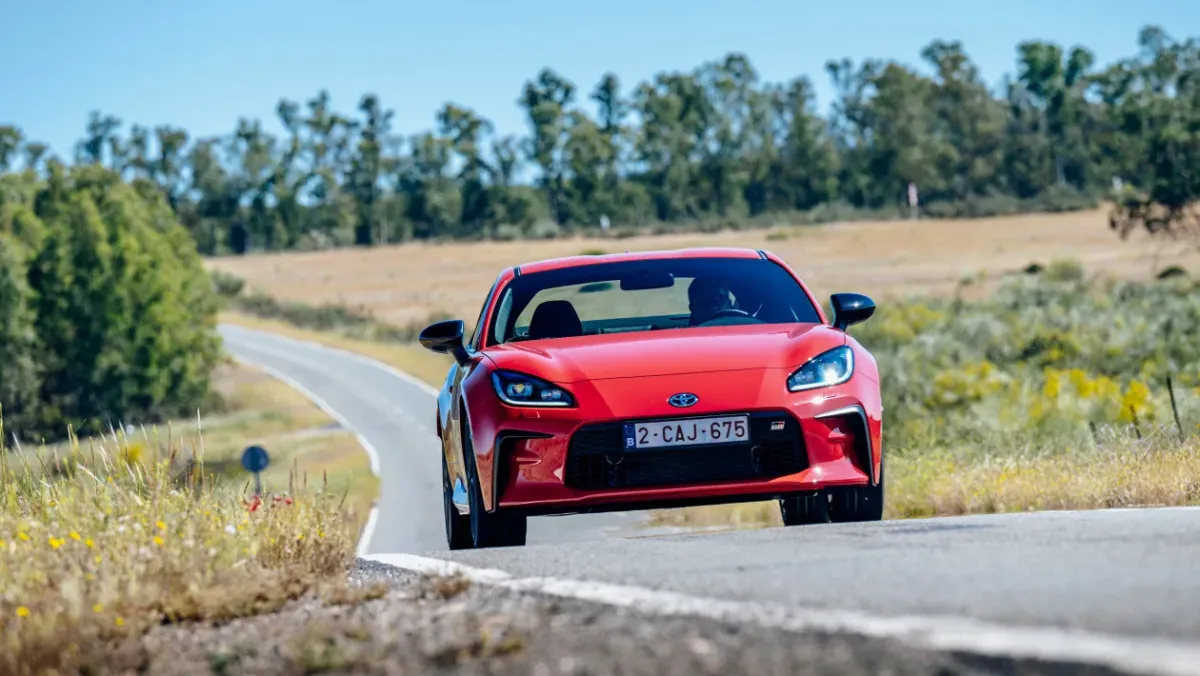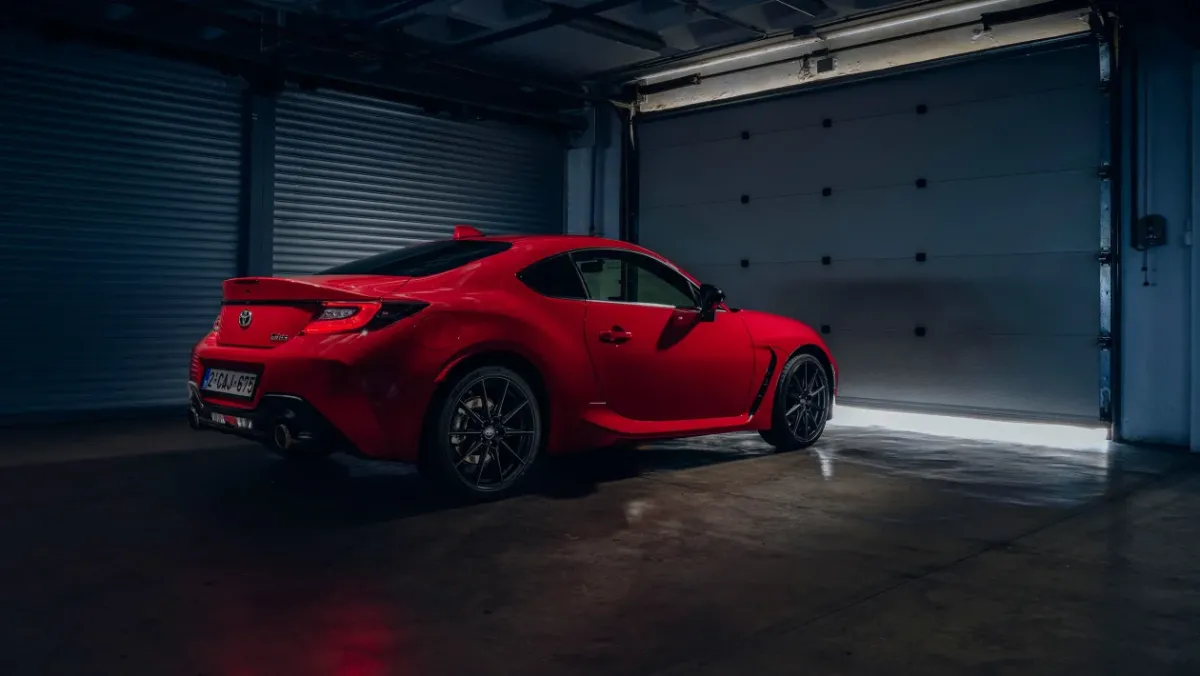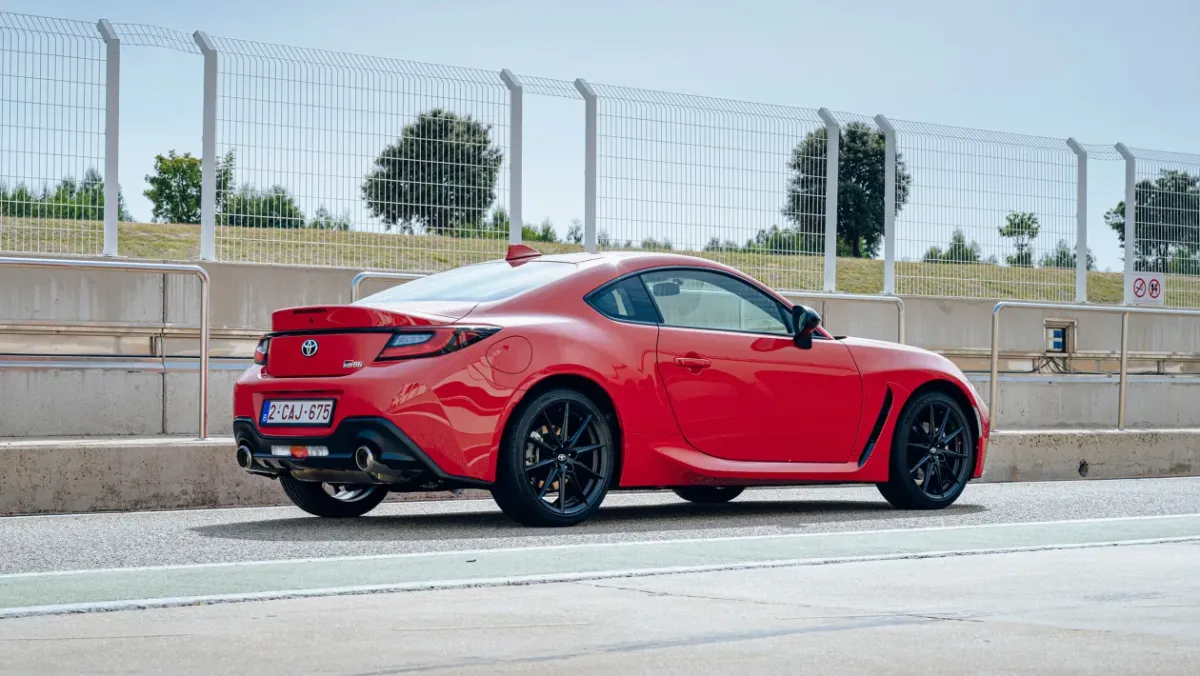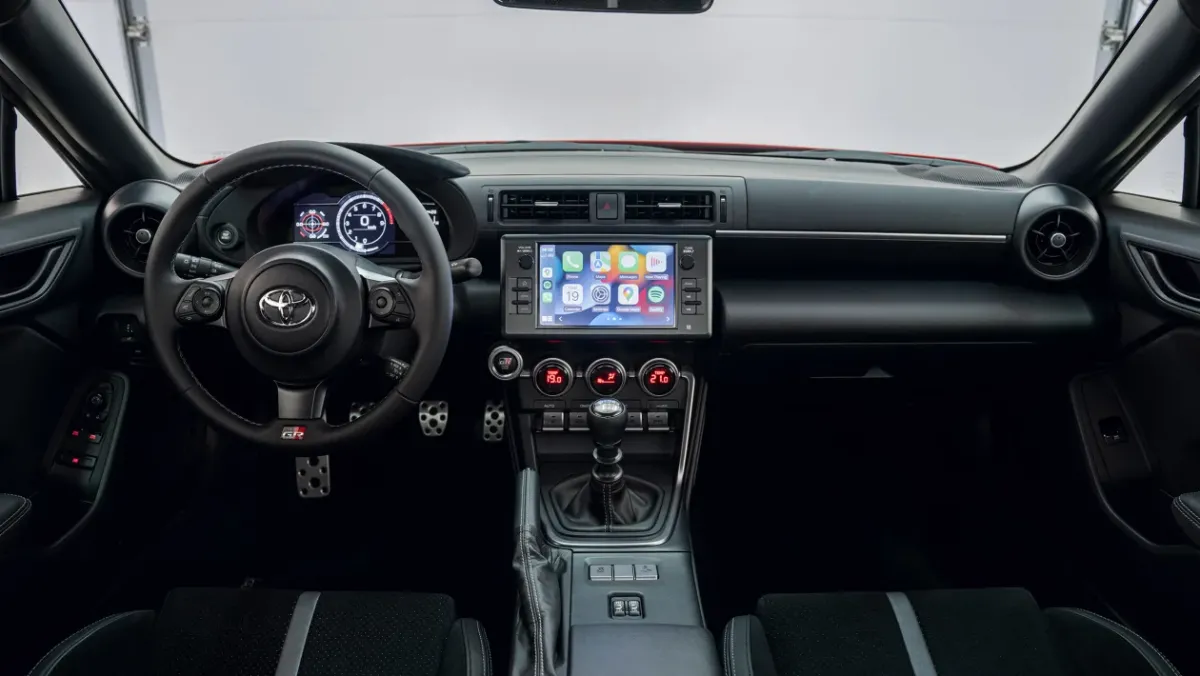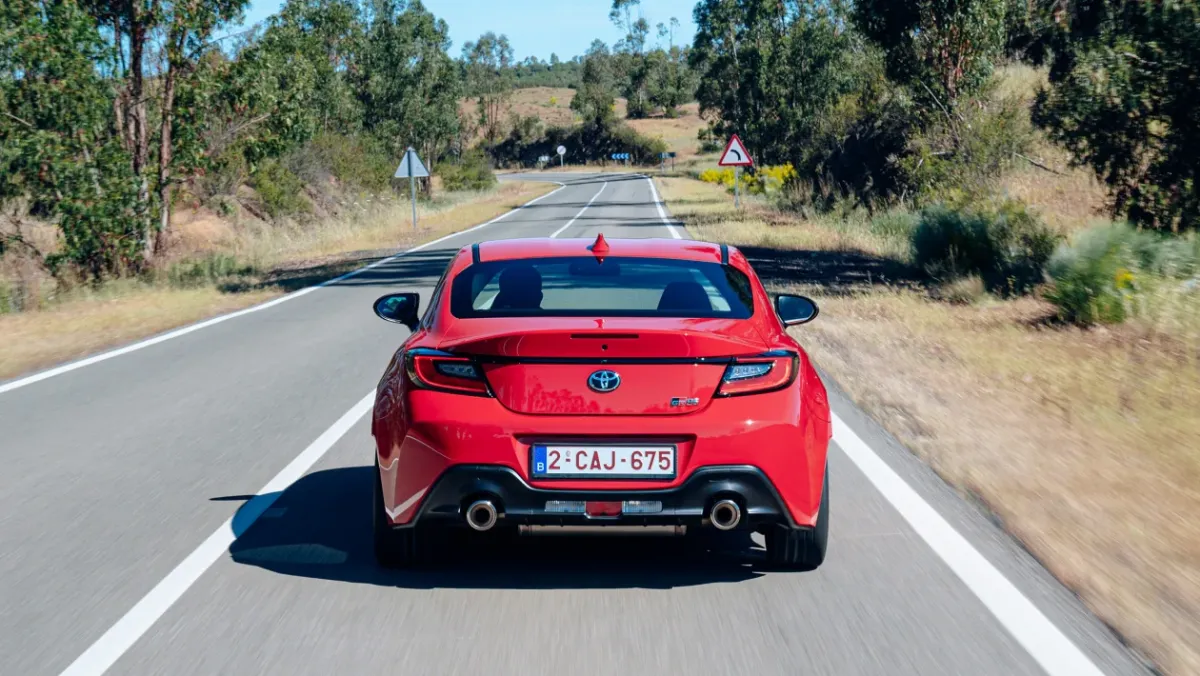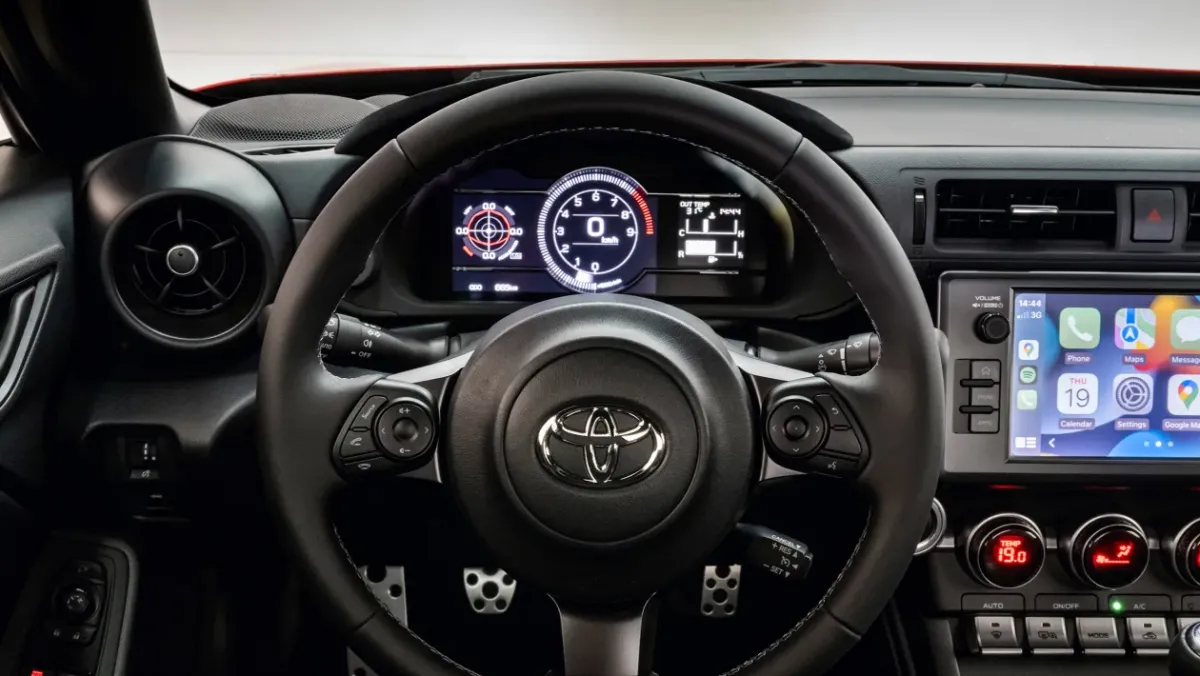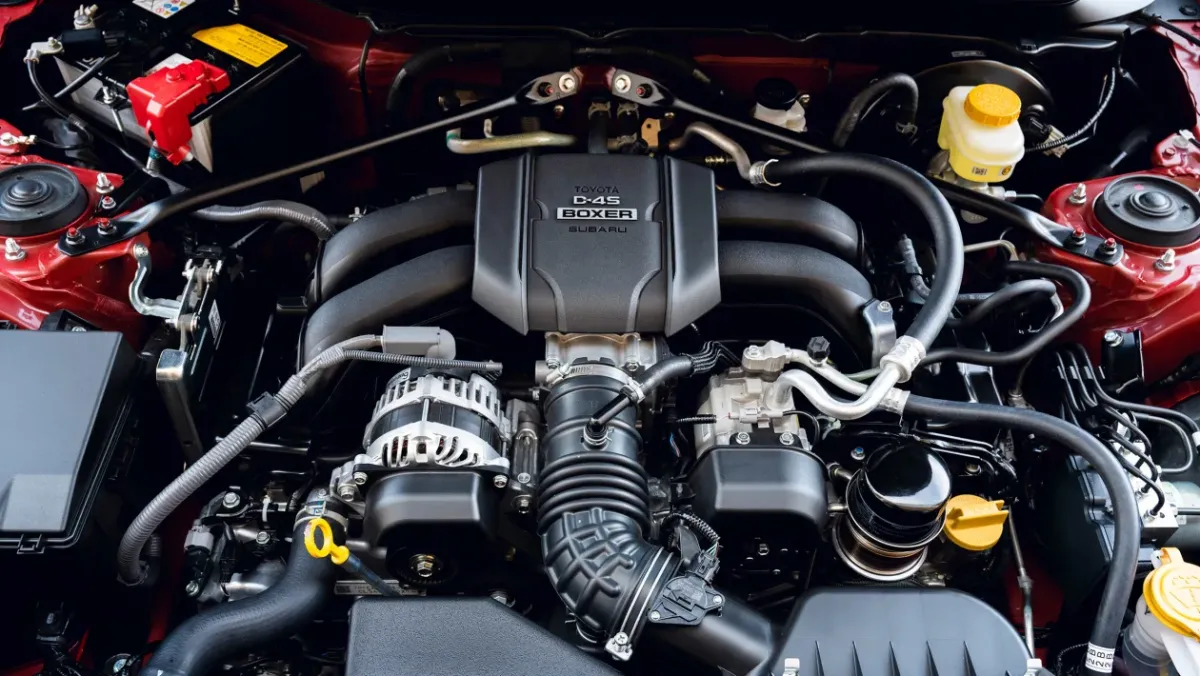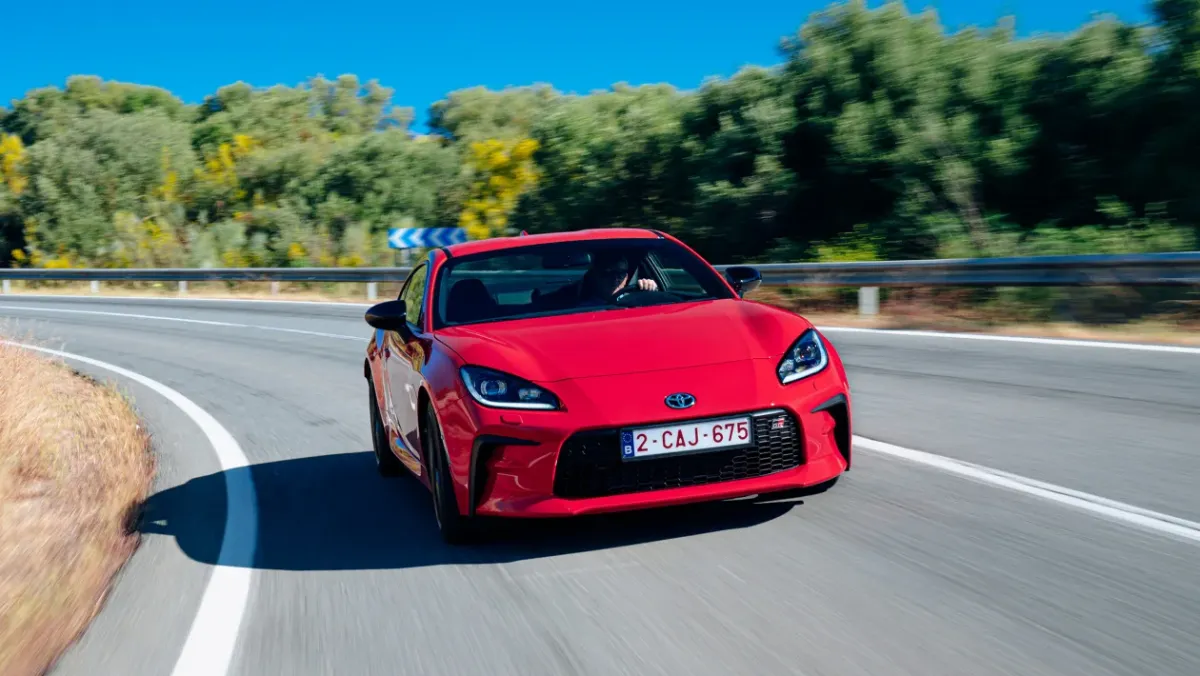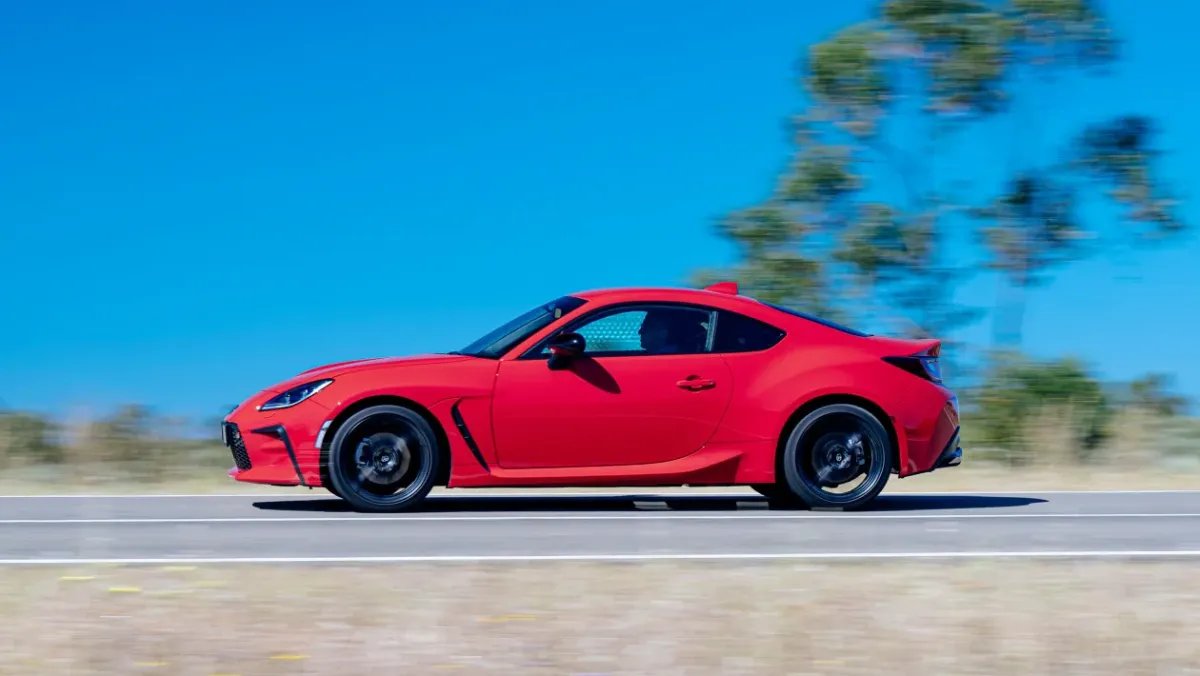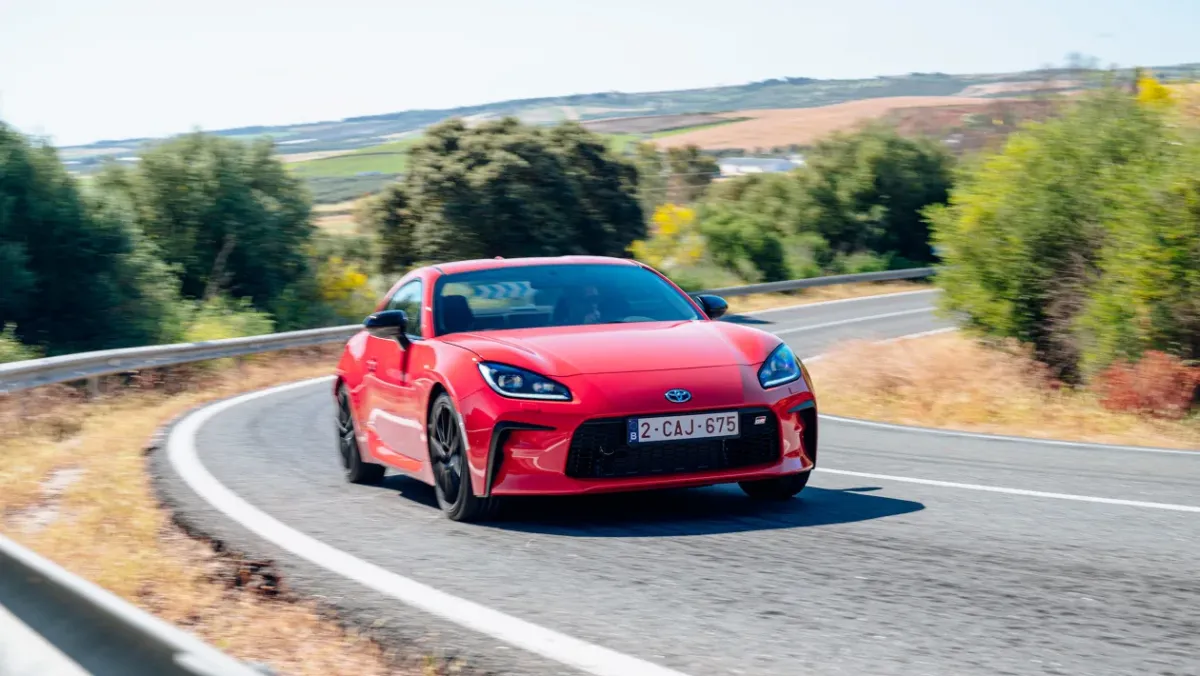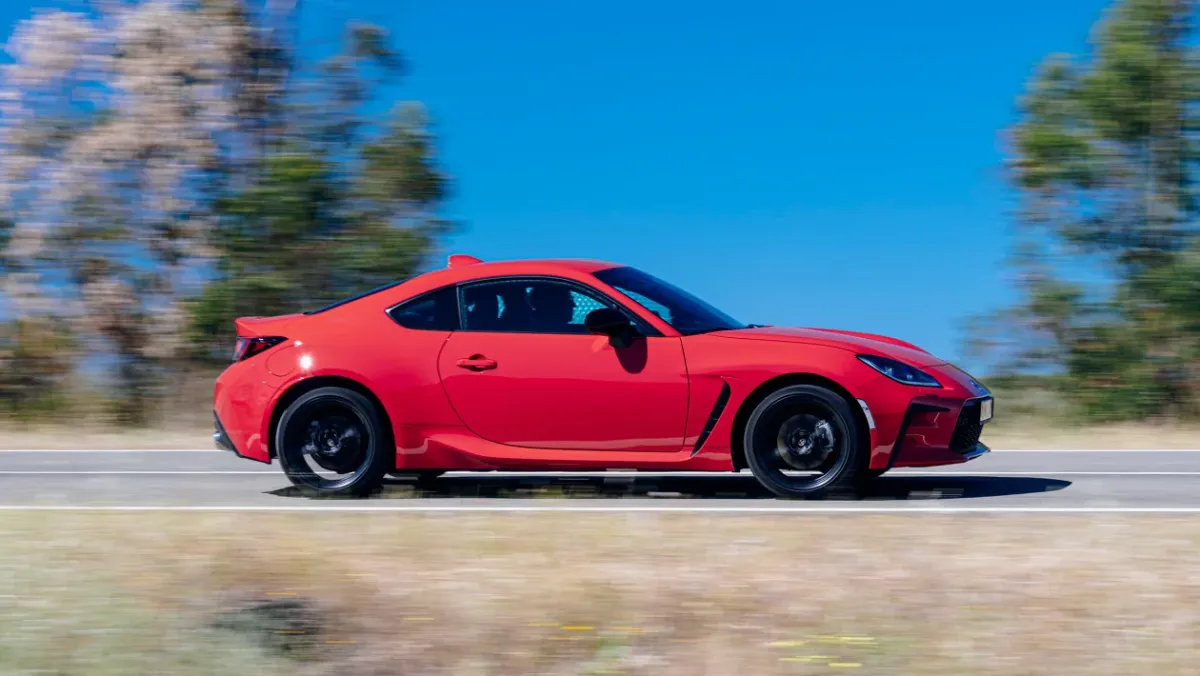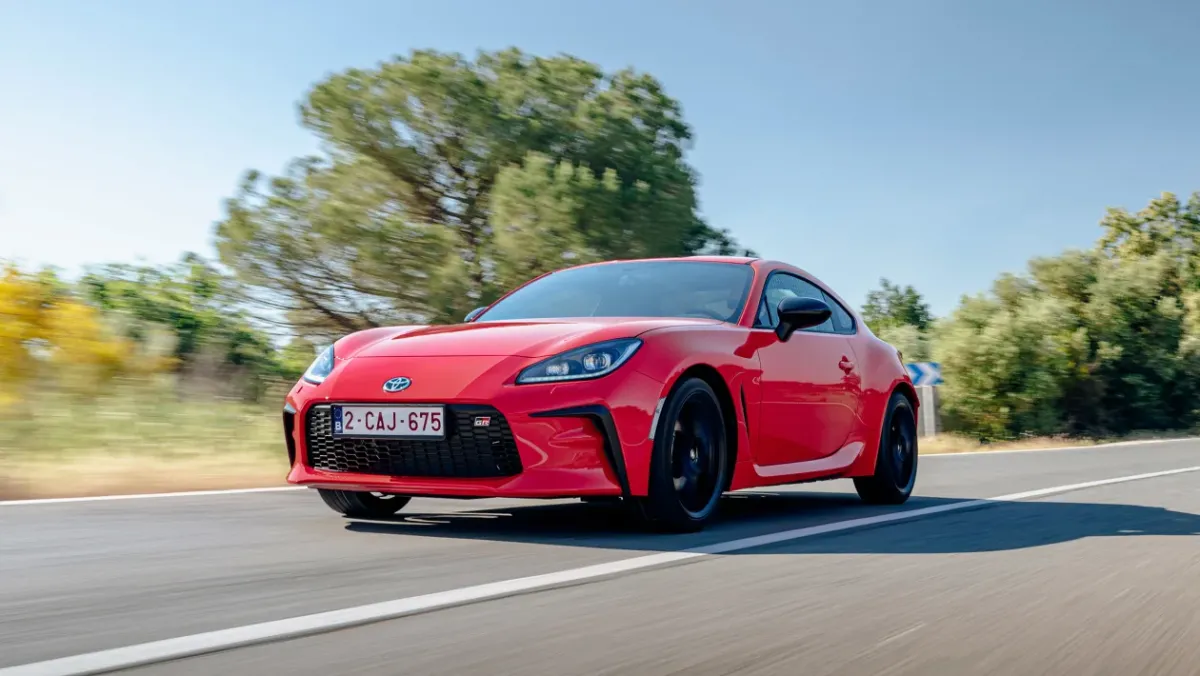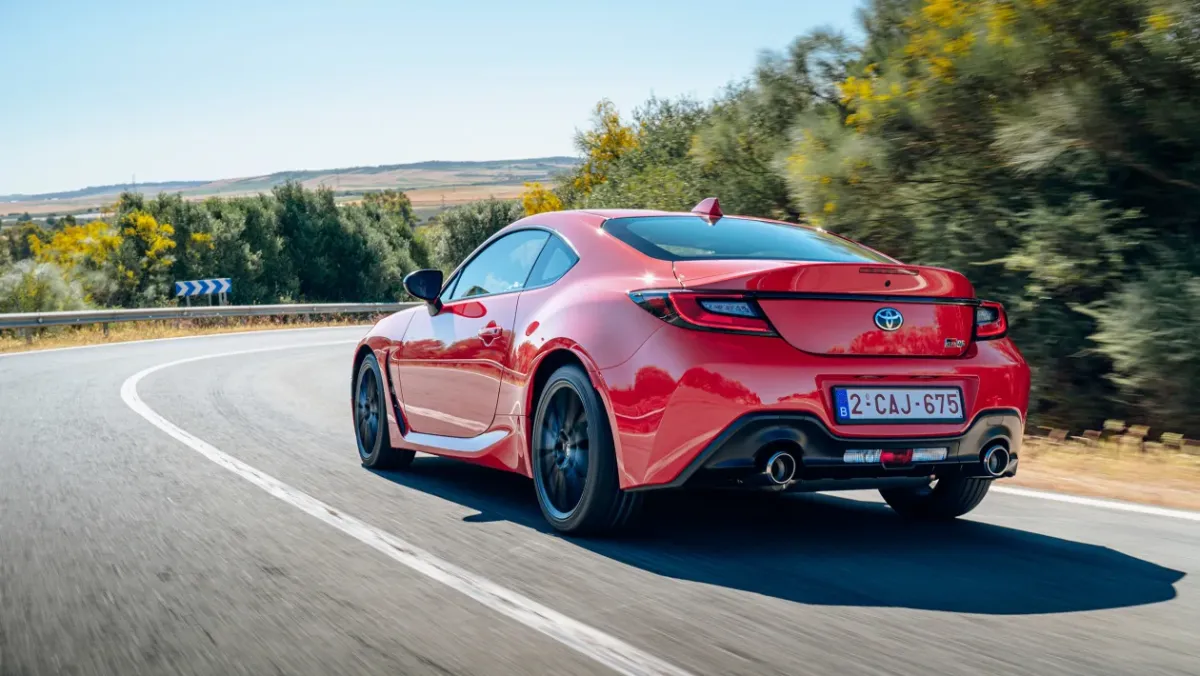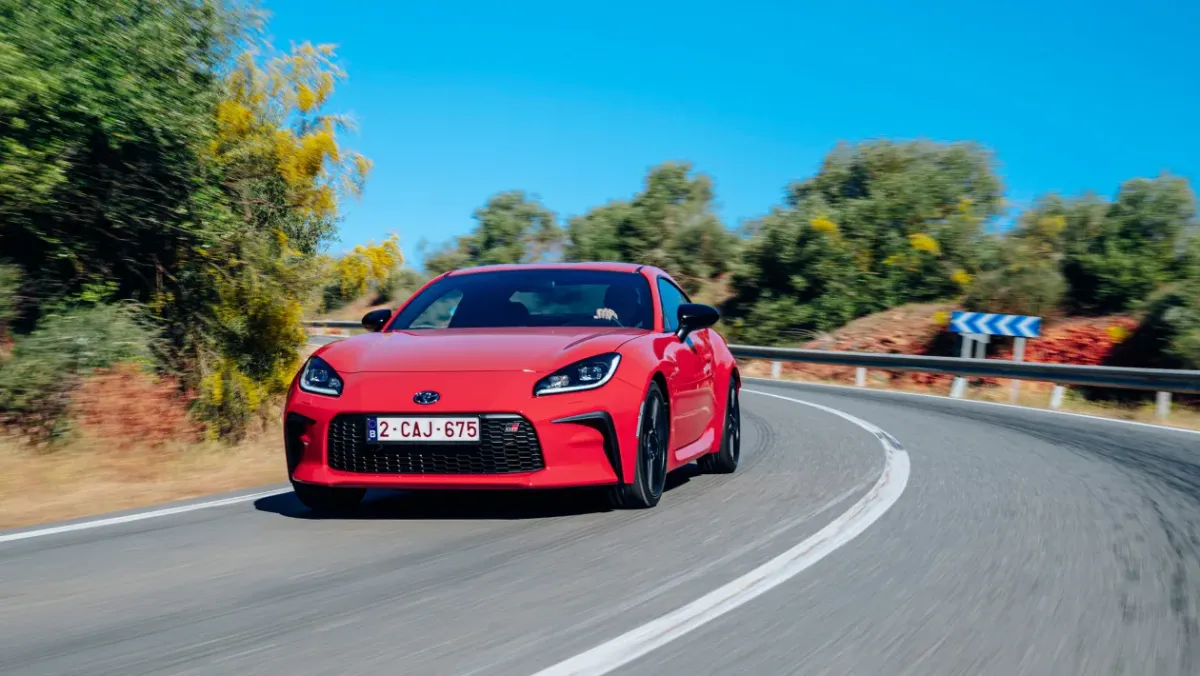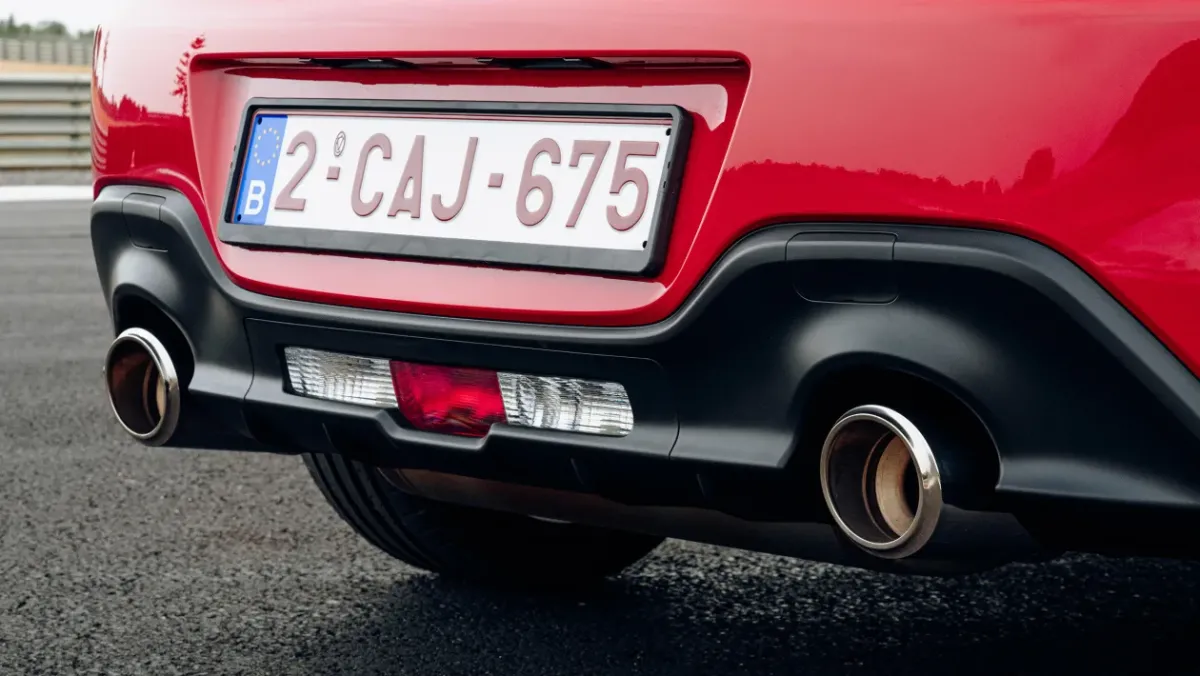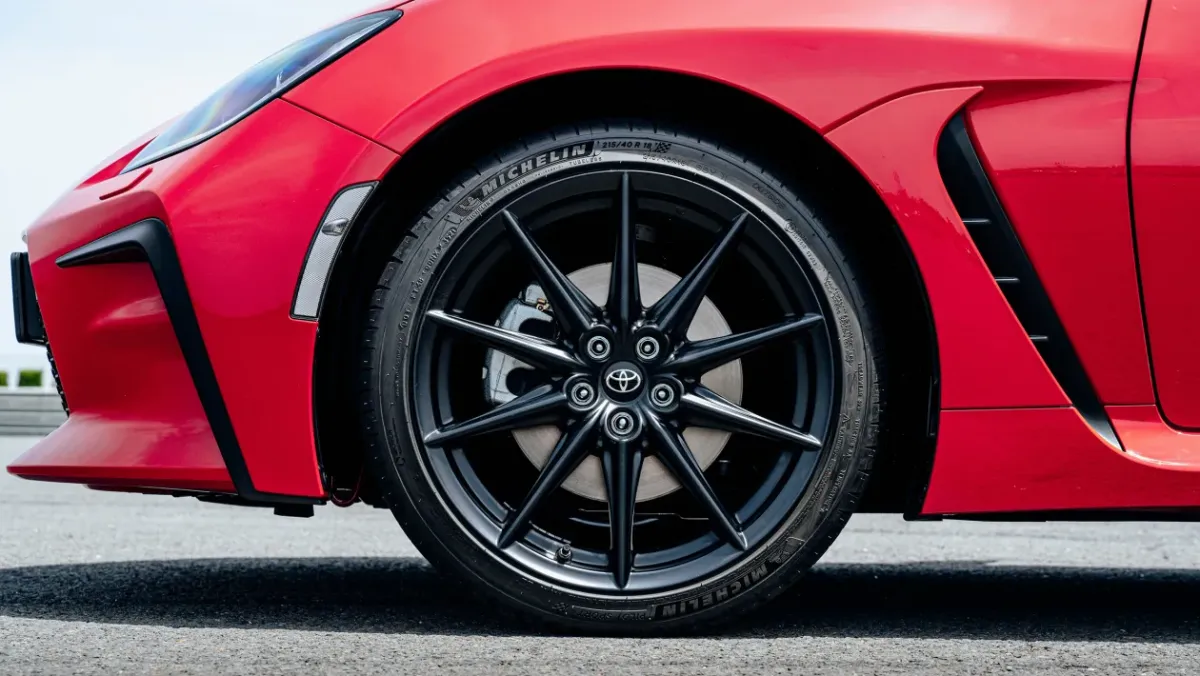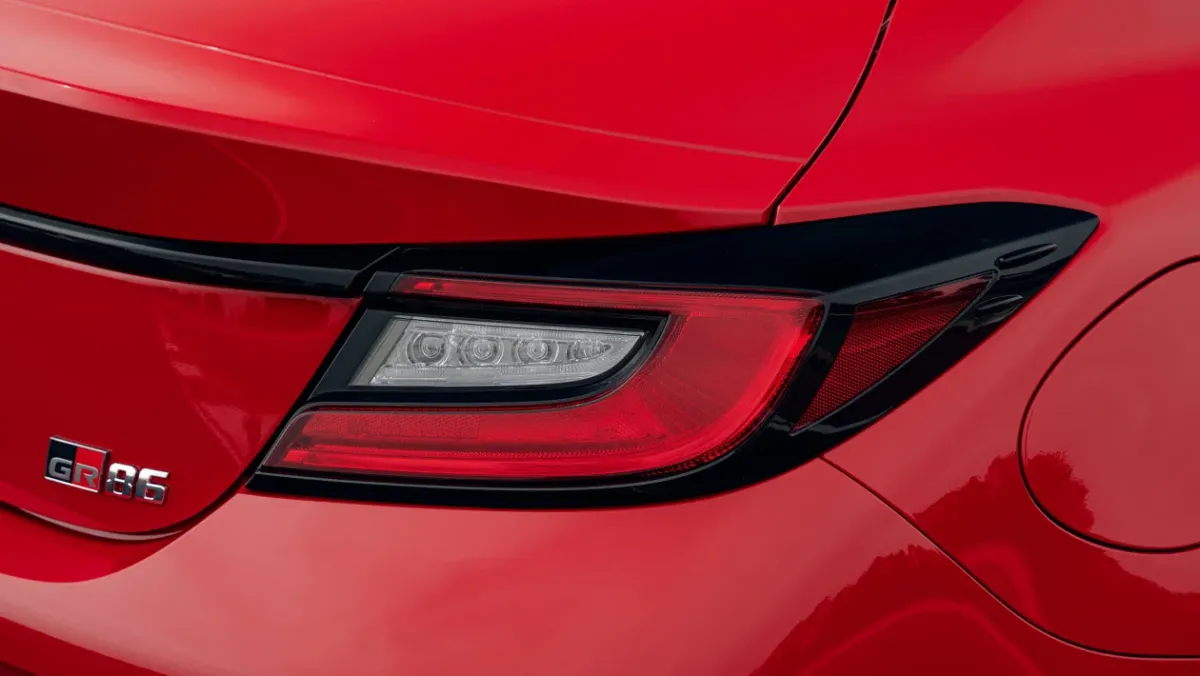No minor revision, the GR86 hit heights beyond the reach of its iconic predecessor
| Engine now delivers what’s required to enjoy everything the chassis offers dynamically | |
| Gearbox shifts could be sharper, steering meatier |
The Toyota GT86 is dead, long live the GR86? Sadly not. At least not for us. Two years and the new model runs nose first into a brick wall of European safety legislation that outlaws the famously low-slung bonnet carried over from its predecessor. It would have necessitated a complete redesign of the front end and Toyota wasn’t up for that. No time to die, maybe, but in this neck of the woods it will be over for the much-anticipated newcomer. Little wonder the initial allocation of around 430 cars in the region sold out in a matter of minutes. There are rumours it may be possible to nab a few more from other markets. Either way, there’s good news for the fortunate few. By and large, it’s terrific.
At the launch briefing in southern Spain, we witness much bigging up of what it means for a Toyota to wear a GR (Gazoo Racing) badge, justifiably surfing the huge wave of critical acclaim for the GR Yaris while acknowledging the happy fact that, with the introduction of the GR Supra MT, the new GR triumvirate is now available with a gear lever and a clutch to satisfy customer clamour.
But what we really want to know is has Toyota’s chosen methodology to raise the GT86’s game retained the raw spirit and honesty of the original? In other words, is the baby still splashing about in the bath water? No, the GT86 wasn’t perfect, far from it. I can’t think of another sporty coupe that blurred the line between fun and frustration so expertly. But in a strange way, the perceived shortcomings – the need to rev given the naturally aspirated 2-litre flat-four motor’s paucity of low and mid-range torque, the raw and gravelly engine note, the unyielding ride over less than billiard table smooth tarmac, the rather spartan interior – added some characterful gnarl to an otherwise pristine front engine/rear drive concept, albeit one strategically hobbled in the rubberwear department to generate more entertainment at lower speeds. Toyota’s much loved Sir Skid-a-lot playbook.
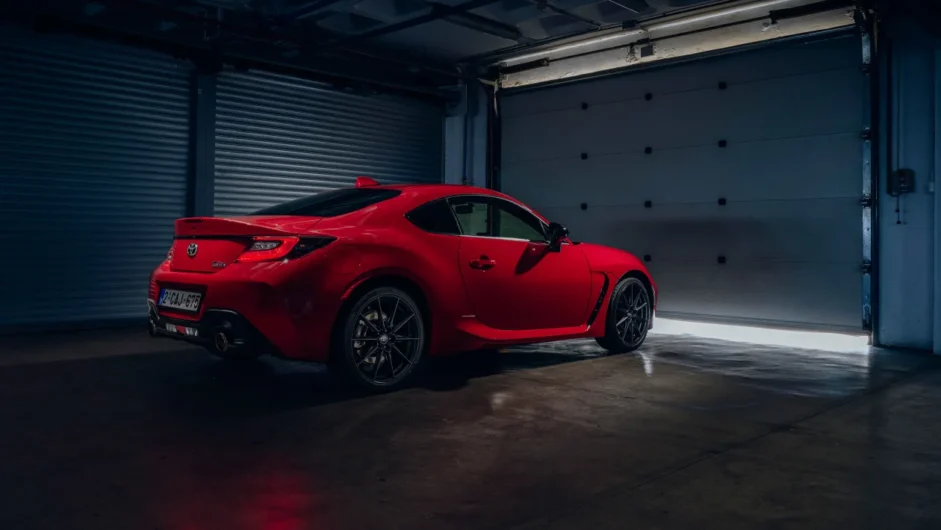
The company won’t have failed to notice, however, that many after-market tuners had their own playbooks that embraced more power and torque (extracted via turbo or supercharger) and fatter tyres – modifications aimed at digging deeper into the low c-of-g chassis’ talent reserves while posting straight line shove more in sync with the GT86’s sharp, sassy styling.
All part of Japanese performance car culture, of course. The GR86 aims to unify both camps with more grip (Michelin Pilot Sport 4 tyres on 18-inch wheels, though 17s and the GT86’s Primacy rubber will be optional in other markets) and jump to 2.4 litres piling on an extra 35bhp and 33 lb ft, the resulting 231bhp and 184 lb ft cutting the 0-100kph time by over a second to 6.3sec, though top speed is unchanged at 225kph. Peaks aren’t the whole story. More relevant to real world driving, maximum torque is now delivered at 3700rpm instead of 6700rpm, promising an entirely different order of in-gear flexibility and general driveability.
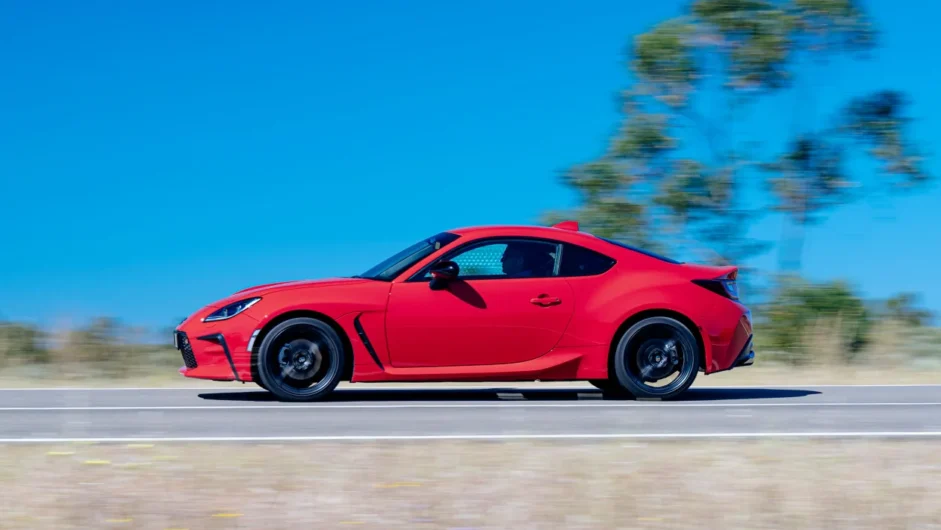
The things that were considered core GT86 attributes, though, carry on. They’re well-rehearsed and merge the acuity and feel of the steering with the satisfaction to be had from changing gear, the supplementary signals decoded by the seat of your pants and the modest distance between your bum and the skin of the road. Sacrosanct assets all enhanced for the GR86 according to team GR. There are too many detail and fine detail changes to list here but, apart from the beefier engine, the big news includes a stiffer bodyshell (especially regarding the suspension’s supporting structures), a spec-for-spec weight reduction by 10kg thanks to the use of more aluminium, a 10mm ride height drop with accompanying changes to geometry, springs and dampers, fettling of the GT86’s short-throw 6-speed ‘box for sweeter shifts when cold and a significantly smartened and upgraded interior with the driver sitting 5mm lower, further sinking the c-of-g of a platform also treated to a 5mm wheelbase stretch.
We drive the GR86 on the fabulously smooth and twisty hill roads west of Seville and, later, the nearby Monteblanco circuit and the larger capacity boxer motor is a revelation, hauling lustily from modest revs in fourth and fifth yet red-lining with perhaps still greater throaty urgency than the previous 2-litre unit, feeling smoother and sounding slightly more sonorous in the act, no doubt a consequence of some flattering sonic augmentation from the cabin’s speakers.
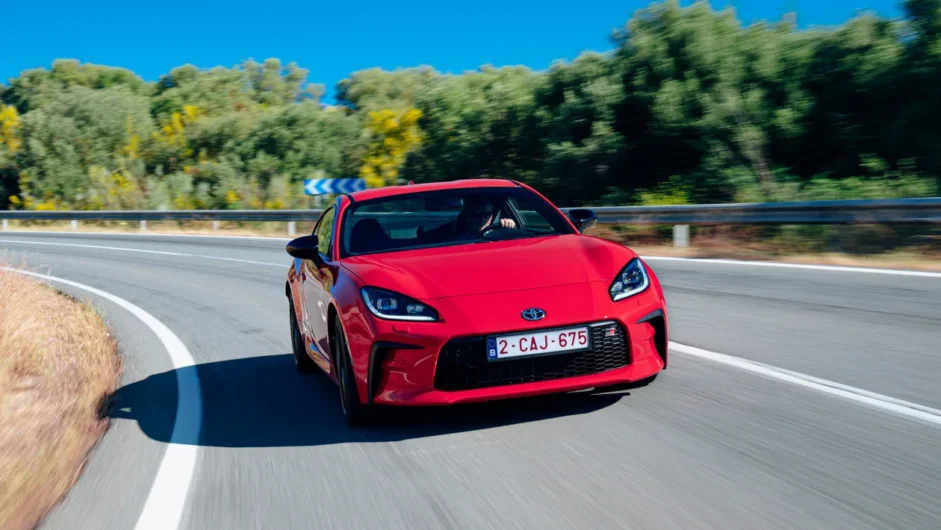
The GR86 isn’t as gratuitously pointy or initially throttle and brake adjustable as the GT86 but, without doubt, its nose is nailed to the tarmac and the super-direct steering is more than ever a paean to precision and finely graded feel. Transitioning to oversteer is more progressive and rewarding, not least because it happens at grown up speeds. The Track setting’s electronic intervention is beautifully judged if you want a safety net and the chassis’ great balance endlessly exploitable if you don’t. Maybe best of all, the engine’s robust swell of torque is an active partner in the process lending the overall dynamics a more contoured and confident feel.
Just as impressive, the stiffer bodyshell and linked suspension work reap results in all sorts of areas but nowhere more than body control and ride. The rather crude and binary nature of the GT86 in the payoff has been finessed to the point where economy of motion no longer results in a ride that squeaks the rubber seals in the door frames. The GR86 just feels planted, potent, pliant and pure of purpose.
Not a fan of the styling. The more bulbous look – presumably to be more like the GR Supra’s – is less exciting than before and, to drive, some of the GT86’s strong character and charm have been sacrificed. That said, measured by any metric you care to choose, the GR86 is a faster, fitter and more roundly rewarding steer.
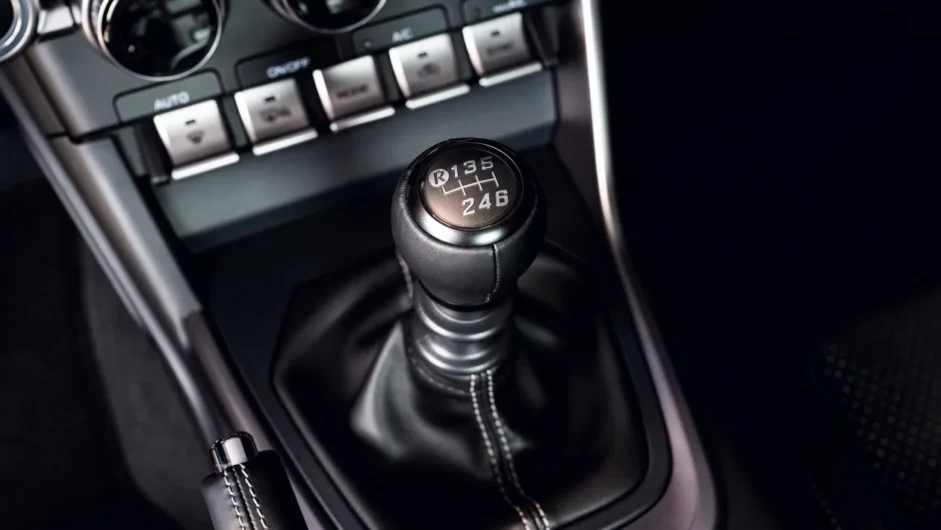
Prices and rivals
Somewhat academic now, the manual GR86 costs a mightily tempting $34,690 in the region with the automatic GR86 pitched a little higher, at $37,107. There are just three paint options: red, white and black to match GR’s brand colours.
The Mazda MX-5 is both smaller and less serious in both 1.5- and 2-litre guises. The closest to the GR86 in ultimate spec is the 182bhp Sport Tech that costs $35,135. It’s not the entry-level car, but does come with the required limited-slip differential, lowered Bilstein suspension and 17-inch wheels. An extra $1750 or so will give you the GT Sport trim, adding lighter BBS wheels amongst other things, which on such a featherweight car does make a difference. Overall the Mazda’s less focused and less capable, but is still a brilliantly entertaining little sports car and comes with the added bonus of an open-top.
This article originally appeared at evo.co.uk
Copyright © evo UK, Autovia Publishing

